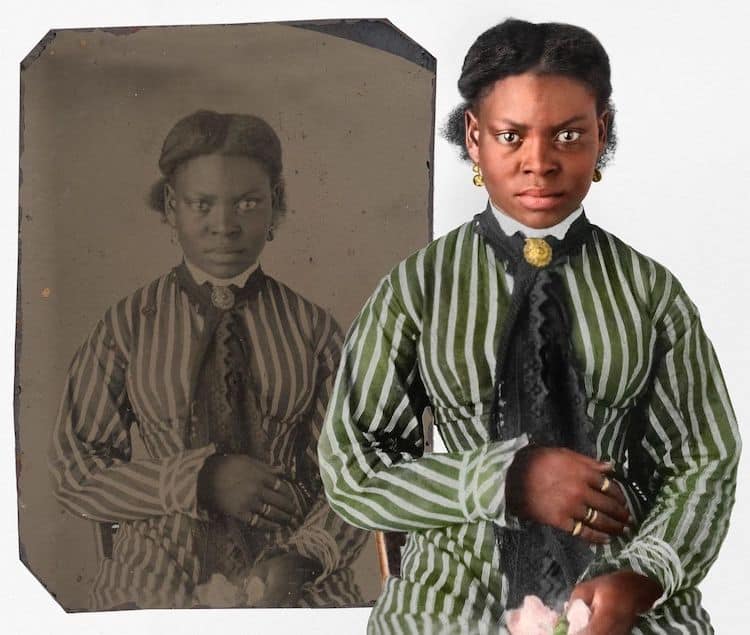
It has been nearly 200 years since the world’s first photograph was taken by Joseph Nicéphore Niépce in 1826 or 1827. Since then, the field has grown tremendously, from tintypes and daguerrotypes to film and eventually digital cameras. Photo restorer Adam “A.B.” Cannon is bringing many forgotten vintage photographs from the 1800s and early 1900s to life by enhancing faces, removing dust, and colorizing images.
“I’ve been restoring, enhancing, and colorizing old photos for families, museums, and historical societies for something like 10 years now,” he tells My Modern Met. “I found an early copy of Photoshop at a garage sale when I was 14 or 15 and I’ve since honed my skills and married those skills with my lifelong love for history.”
Cannon sources images that are in the public domain from digitally available online archives like the Library of Congress and the Smithsonian Institute. After working extensively on images from the 1900s, he came across prints from the mid-to-late 1800s and was impressed by the quality.
“One day in my archival deep dive, I started seeing old tintypes, daguerreotypes, and ambrotype ‘prints’ produced by the most cutting edge technology in photography of the 1840s–1870s,” he explained. “I was blown away by the quality and clarity packed into these small prints—as they were produced with chemical reactions on metal plates, they have essentially infinite resolution.”
By restoring photographs from over 150 years ago, Cannon hopes to shed light on the past and reveal a less-often seen side of this period in American history. The subjects in these restored photographs are placed side by side with their original image so that audiences can see the differences between them. In all cases, the colorized version stands out for its lifelike qualities.
“I believe colorization can be powerful in making our past more accessible and real,” Cannon continues. “People in these photos didn’t live in a silent, gray world. They saw the world in vibrant color just as we do. My hope with my newest project, ALIVE: The Civil War in Color, aims to remove the veil of age; to help us realize that these people 150+ years ago witnessed slavery, the bloodiest conflict in American history, a presidential assassination, and more highly consequential circumstances in vivid color and clarity.”
Each part of the restoration process is done manually on the computer. Cannon avoids using automatic filters and software so that he can ensure the image remains faithful to the original. In addition, he consults with experts in history and clothing to make informed decisions in the coloring process. “I research the most common dyes and styles down to the month and neighborhood to ensure the most accurate depiction possible,” Cannon says. “You can also observe similar modern objects and how they appear in color vs in black and white. I hold a sincere reverence for history, so I’m extremely committed to providing the most realistic depictions as I possibly can.”
You can check out Cannon’s photo restoration services via his website, and keep up to date with his latest projects by following him on Instagram.
Photo restorer Adam “A.B.” Cannon brings vintage photographs to life.
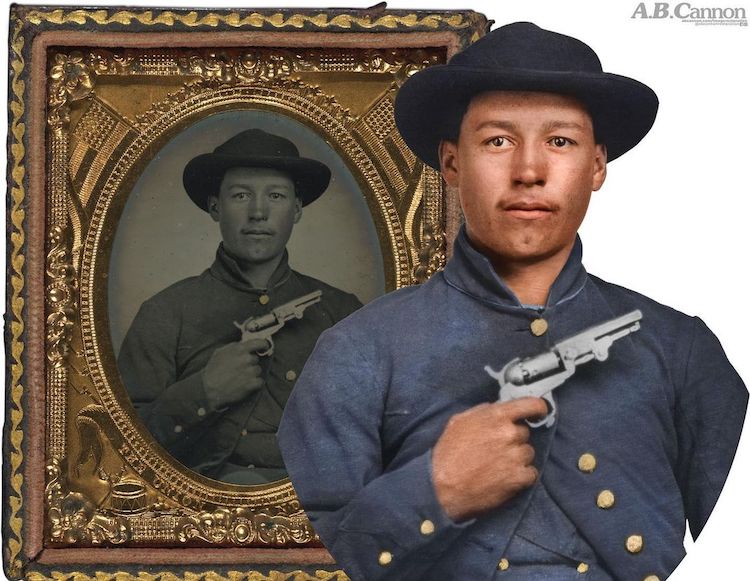
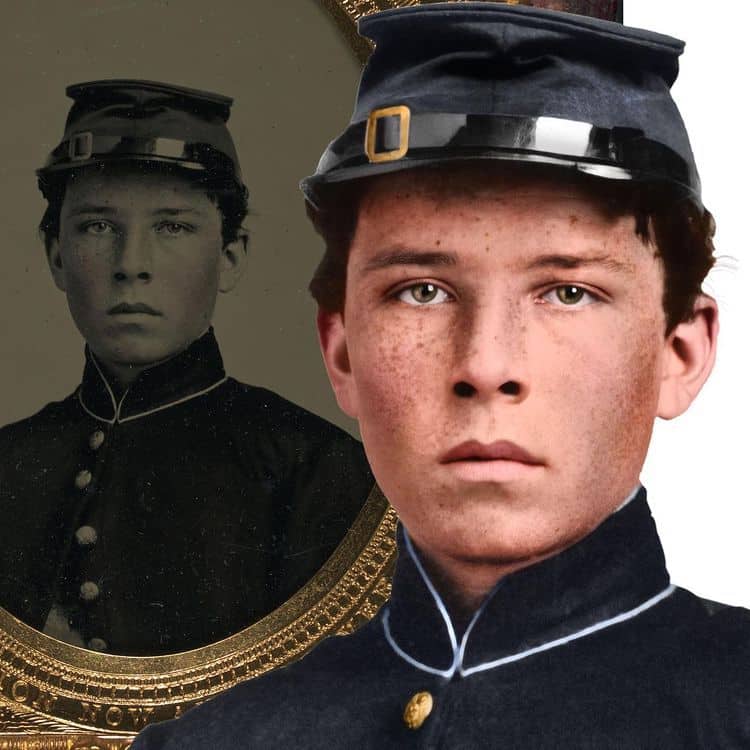
His latest series ALIVE: The Civil War in Color focuses on daguerreotypes and tintypes from the 1840s–1870s.
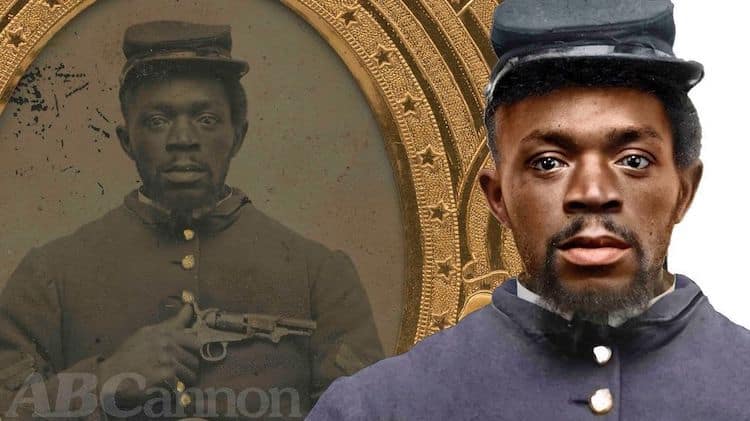
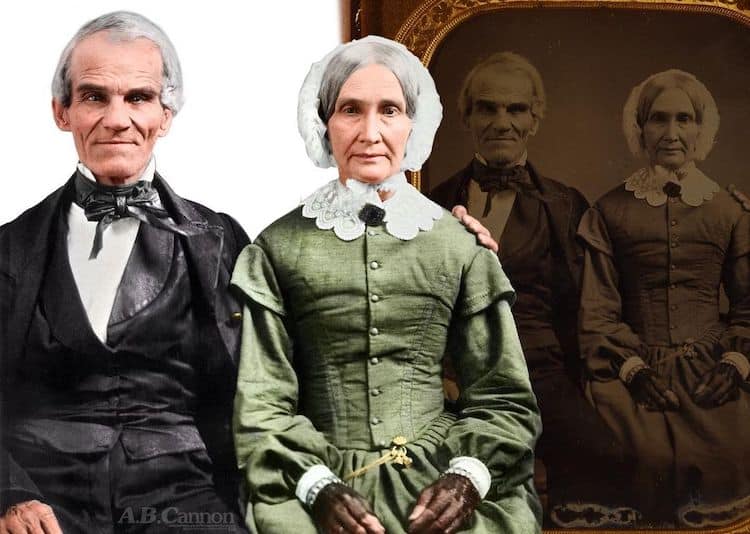
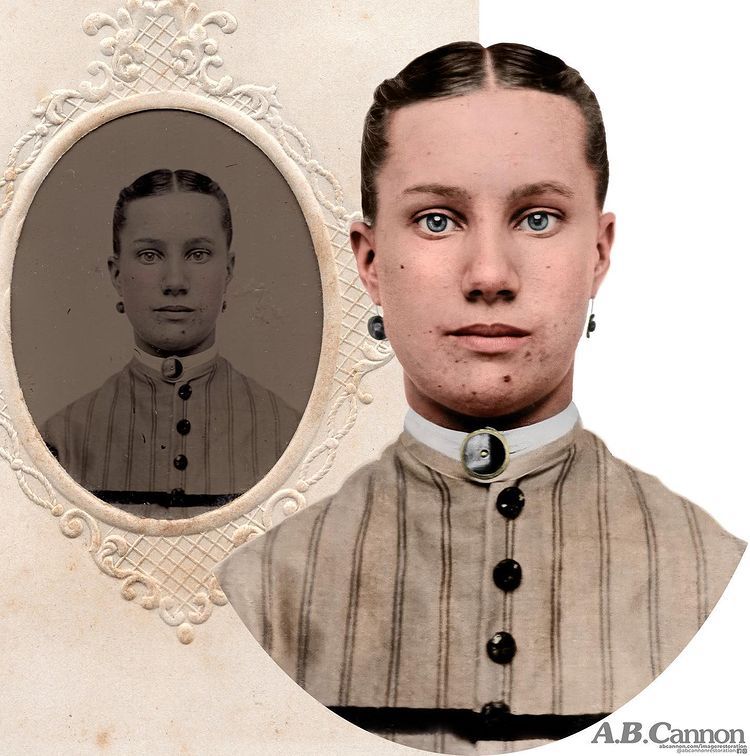
Cannon faithfully enhances and colorizes images from over 150 years ago to show the past in color.
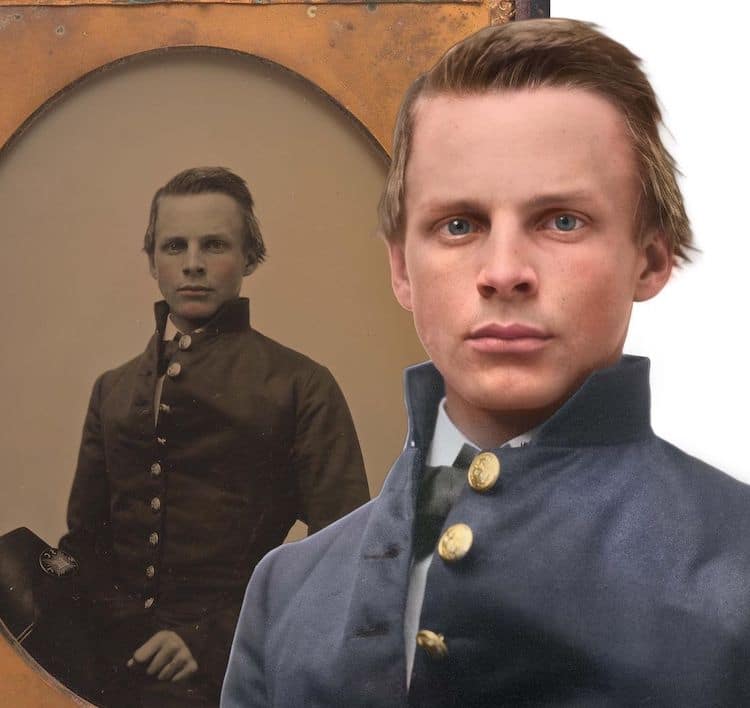
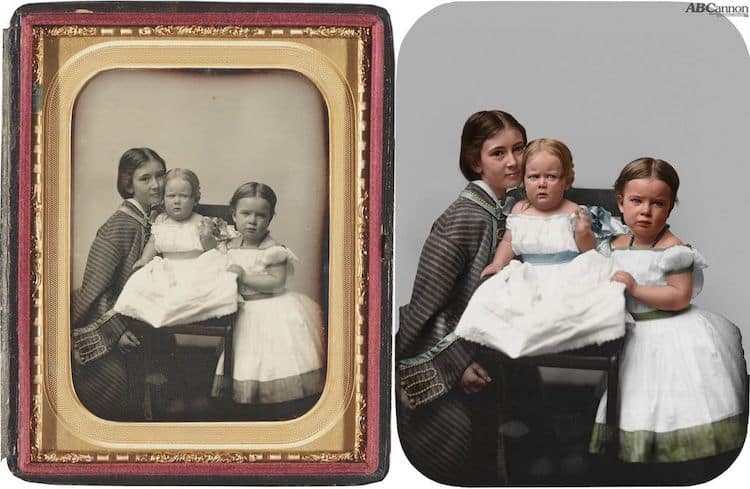 Adam “A.B.” Cannon: Website | Instagram
Adam “A.B.” Cannon: Website | Instagram
My Modern Met granted permission to feature photos by Adam “A.B.” Cannon.
Related Articles:
Striking Winners of the 2022 Black and White Photo Awards
Stunning Submerged Photography Offers New Artistic Perspective on Life Underwater
Woman From ‘Napalm Girl’ Photo Receives Her Final Burn Treatment 50 Years Later
